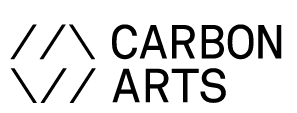Art, innovation and risk
Author Gabriel Harp
The BREATHE exhibition, co-curated by Carbon Arts and CoClimate for the World Health Organisation, provides a chance to reflect, and be mindful about the linkages between health, the environment, and public engagement. The exhibition offers attendees a small sample of evidence, objects, visualizations, images, and gestures; each is designed to convey the impacts of air pollutants and what those impacts mean for personal and environmental health. It is hoped that the work presented here stimulates viewers to further explore linkages between air quality, climate and health, as well as between technology, culture and infrastructure in their own environment.
But why use art? Why not show the facts to spur action or exhibit more conventional persuasive messaging examples? The answer to that question lies deep at the heart of human psychology, and it stems from the diversity of human experience. People interpret information about the environment and their experiences with the environment in vastly different terms. As a result, risks and linkages between human and environmental health hazards are treated very differently by different people. When it comes to the environment (and even personal health), there is no such thing as common sense. Instead, the vast majority of people on the planet look to those who are closest to them for evidence of what works and for moral guidance.
The impact of art, like air pollution, exists at the level of human experience, rather than at the level of direct communication. It is an inherently fuzzy, ambient, imprecise, and inefficient form of communication. Those same qualities also make it special and powerful; it speaks more directly to different kinds of people through the common bonds of human experience the senses.
Artists and designers ask what emotions are possible, and they invoke those emotions using an array of skills, materials, and meaning. Emotions connect directly with people’s deep-seated moral foundations through novel aesthetic experiences, visceral reactions of disgust, pleasure and surprise, abstract confusion and uncertainty, or even a sense of alienation about one’s own identity and role in society. Art prompts audiences to reflect on their personal experiences, to update their mental models for how the world works, and to expand their worldviews to encompass new goals for themselves and new forms of risk and reward. Art provokes informed citizenship.
Air pollution is now one of the world’s largest health risks, and the biggest environmental health risk with some 7 million deaths annually attributable to outdoor and household air pollution from heart disease, stroke, respiratory diseases, and cancers. Now imagine that 7 million as roughly equal to the population of Hong Kong, only a little more than Rio de Janeiro (6.5 million), or a little less than the population of Switzerland (8 million). Thinking about air pollution in those dimensions offers even more perspective on the problem. It’s huge.
Art often employs metaphors, and the best examples connect directly with people’s everyday experiences and senses. What does smog taste like? Is it sweet, salty, bitter, or sour? How does it make you feel? We often write about social and environmental change using terms like force, impact, or movement to describe its weight in terms people can understand. But how do most people actually experience those changes? Is it hot or cold? Does climate change mitigation require the tiniest push of a pen or the Herculean effort of moving a boulder? Without readymade comparisons, it can be difficult for ordinary people to imagine the task at hand. Art and artists draw these comparisons and make them visible; they lower the cognitive effort of uncertainty.
This exhibition presents original works of art to stimulate new perspectives. By creating awareness and asking audiences to reflect, art provides a platform for different audiences to share common strands of human experience. Art takes people out of the ordinary, the expected, and the anticipated. It opens people’s minds to new possibilities, alternative scenarios, and unexpected paths of action. We hope you will do the same.
Gabriel Harp is an evolutionary ecologist who has worked in both research and design, and is a partner at CoClimate. This is an excerpt from the exhibition catalogue.
